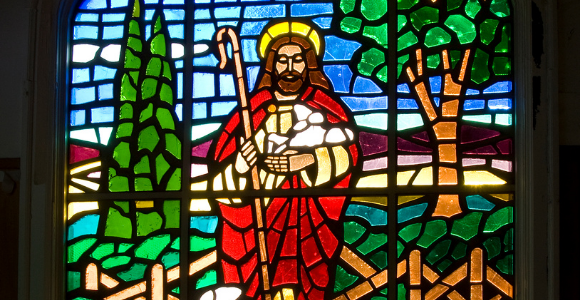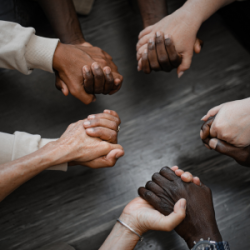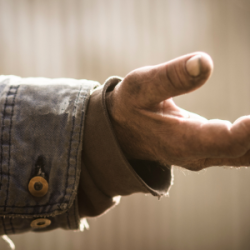Welcome readers! Please subscribe through the buttons on the right.
(Read this series from its beginning here.)

In this week’s passage from John, the focus isn’t the death of Jesus but Jesus taking life back up after his death. Even the purpose of Jesus’ laying down of life was that he might take it up again. The focus is not death, but taking hold of life—resurrection.
During this post-Easter season, remember that the cross interrupted Jesus’ life-giving ministry and teaching. The powerful, propertied, and privileged intended it to be permanent. The cross was meant to silence his calls for societal change, but the resurrection overturned that silencing. In the story, the resurrection doesn’t conquer death with more death. It answers death with death-reversing life; it answers death-dealing injustice with life-giving justice. I love this statement by Elizabeth Johnston that squarely defines act of Jesus’ crucifixion as a sin. And if it is a sin, then it is contrary to the will of God:
“Along with other forms of political and liberation theology, feminist theology repudiates an interpretation of the death of Jesus as required by God in repayment for sin . . . Jesus’ death was an act of violence brought about by threatened human men, as sin, and therefore against the will of a gracious God . . . What comes clear in the event, however, is not Jesus’ necessary passive victimization divinely decreed as a penalty for sin, but rather a dialectic of disaster and powerful human love through which the gracious God of Jesus enters into solidarity with all those who suffer . . . The victory of love, both human and divine, that spins new life out of this disaster is expressed in belief in the risen Christ.” (Elizabeth A. Johnson, She Who Is, Kindle Location 4183)
The resurrection overturns the unjust state-sanctioned violence, and places Divine solidarity on the side of Jesus and all others who have unjustly suffered violence at the hands of the state. Today, that Divine solidarity includes Eric Garner, Michael Brown, Tamir Rice, Walter Scott, Alton Sterling, Philando Castile, Stephon Clark, Breonna Taylor, Atatiana Jefferson, Pamela Turner, Korryn Gaines, Yvette Smith, Miriam Carey, Shelley Frey, Darnisha Harris, Malissa Williams, Shantel Davis, Rekia Boyd, Aiyana Stanley-Jones, Tarika Wilson, Kathryn Johnston, Kendra James, Tyisha Miller, George Floyd, Daunte Wright, and many, many more. This story that so many White Christians hold dear puts God on the side of these lost Black lives. And where we stand, whether in solidarity, neutrality, devil’s advocacy, indifference, or even opposition, reveals where we stand in relation to the God of the Jesus story. We are only with this God when we are with them.
The resurrection places the God of the Jesus story squarely on the side of justice and in the midst of the state-murdered community. The symbol of resurrection sends a message of justice overcoming injustice, love conquering hate, life overcoming death, and an unjust tomb not being able to hold justice back.
Today we need a new story of justice overcoming in the end. We’ll contemplate this further in part 3.













